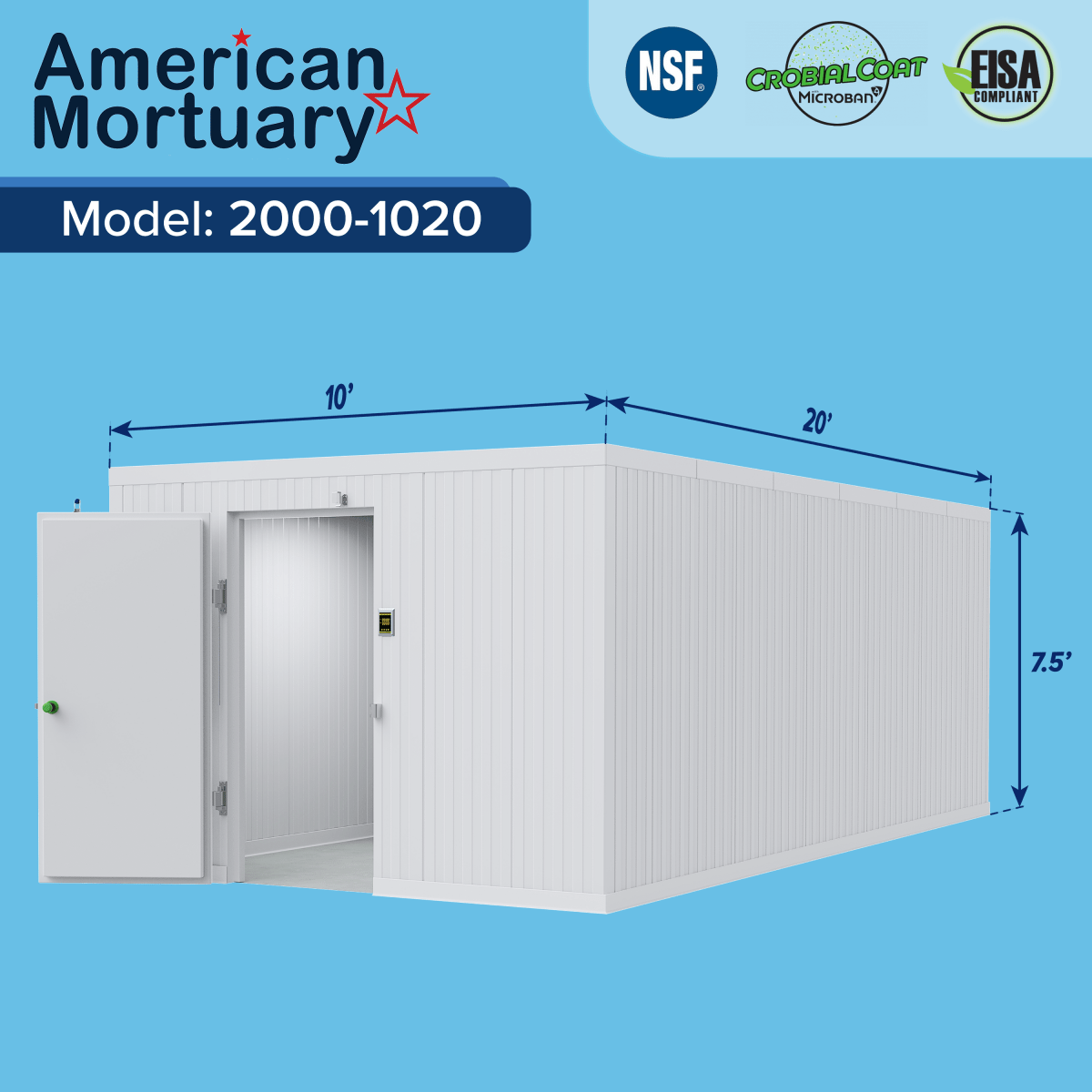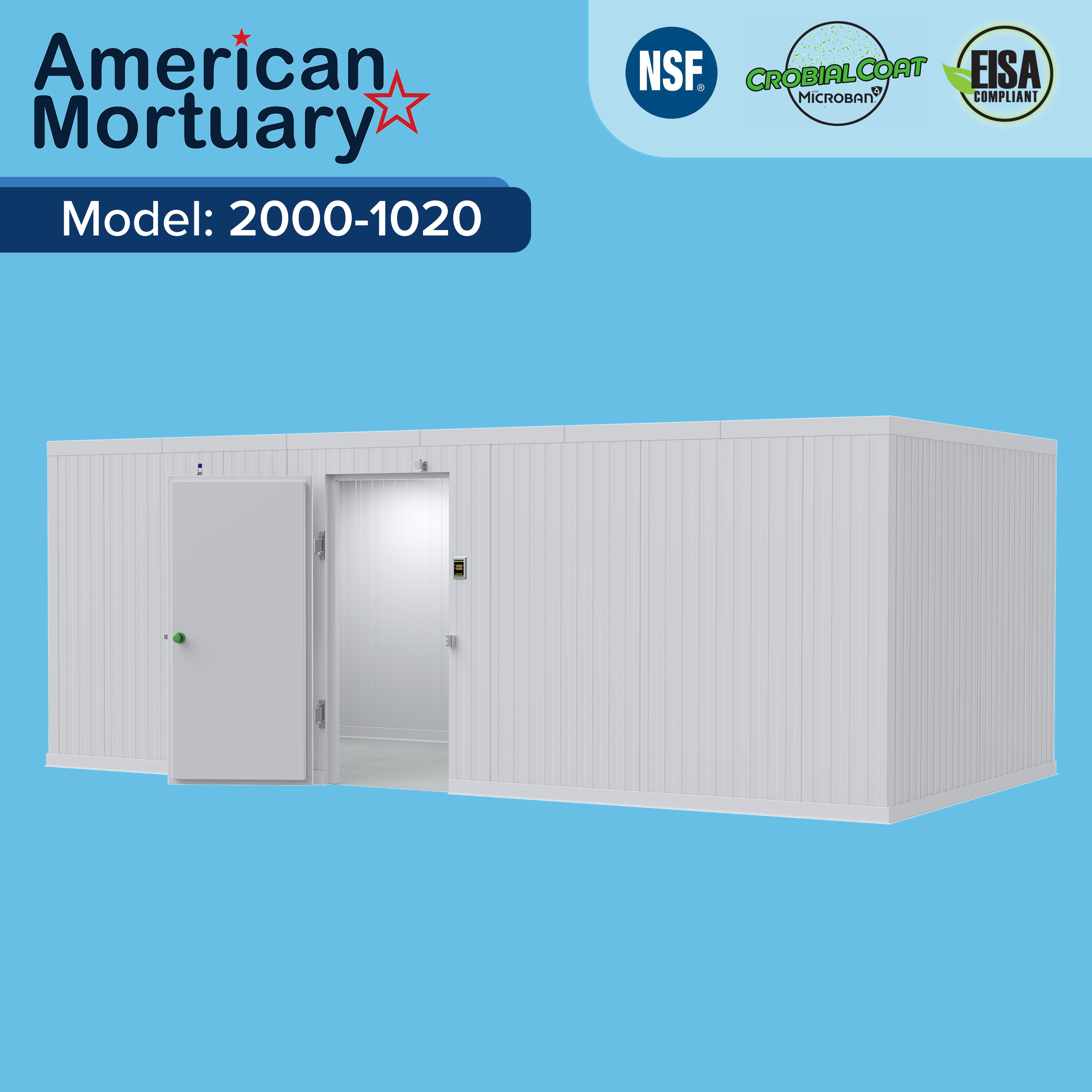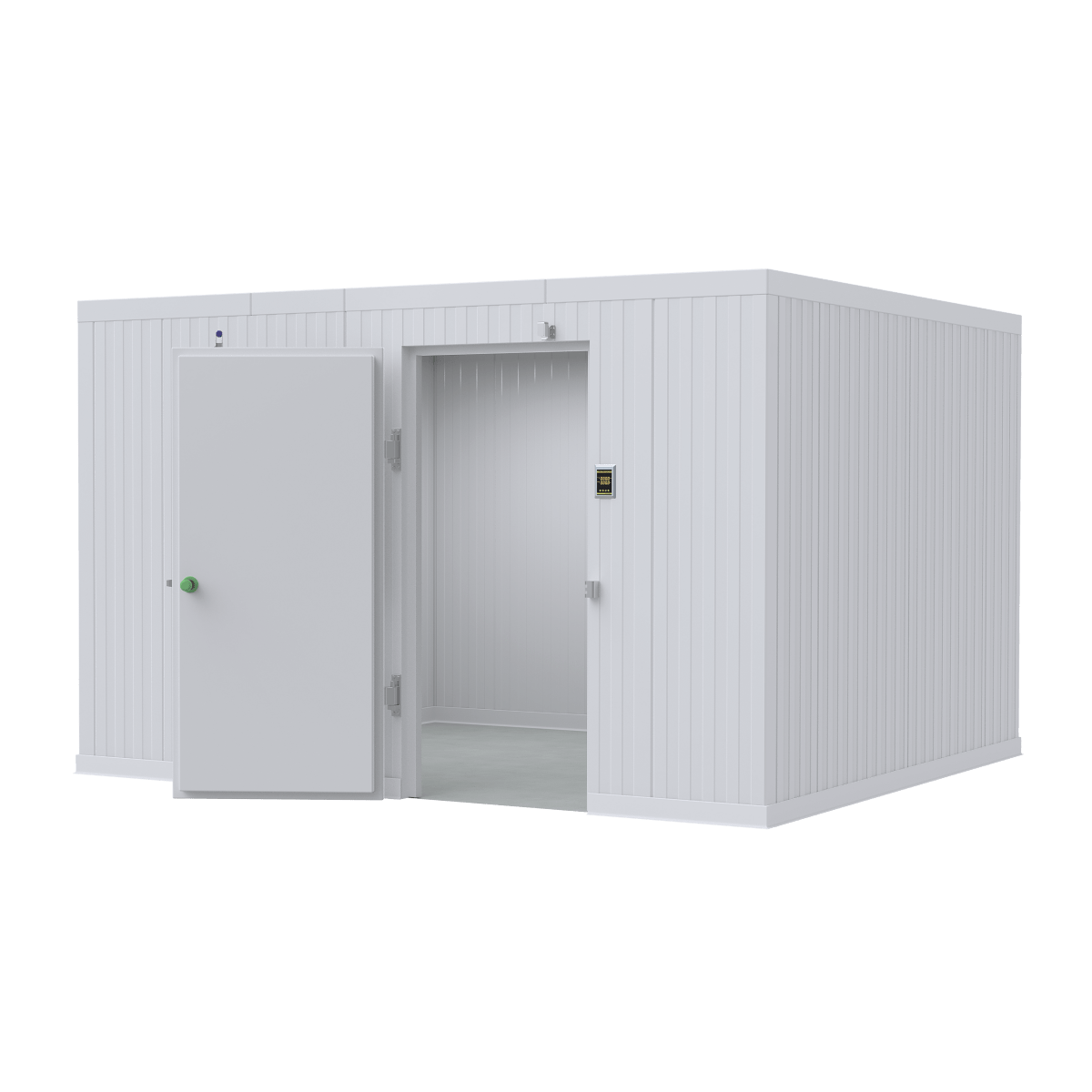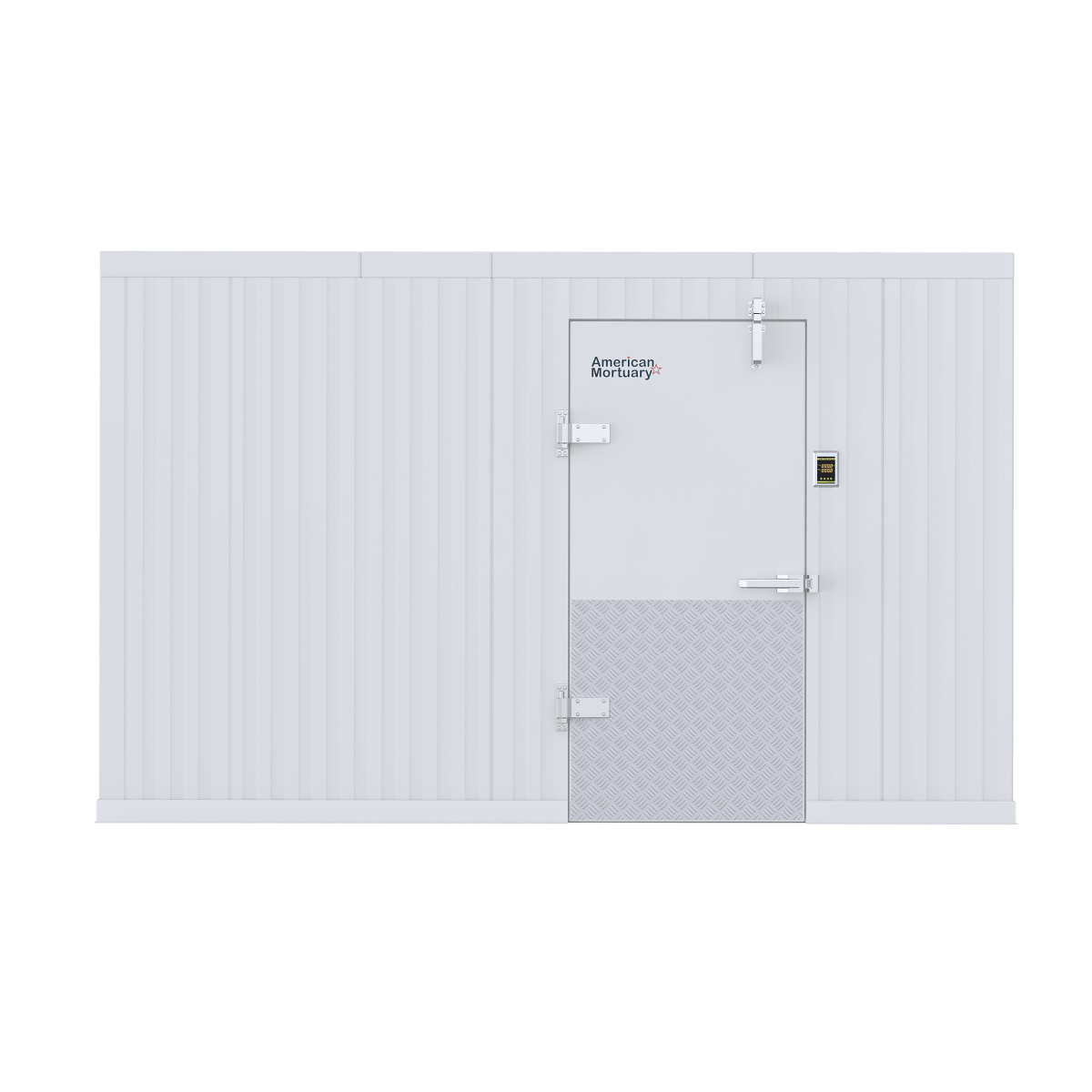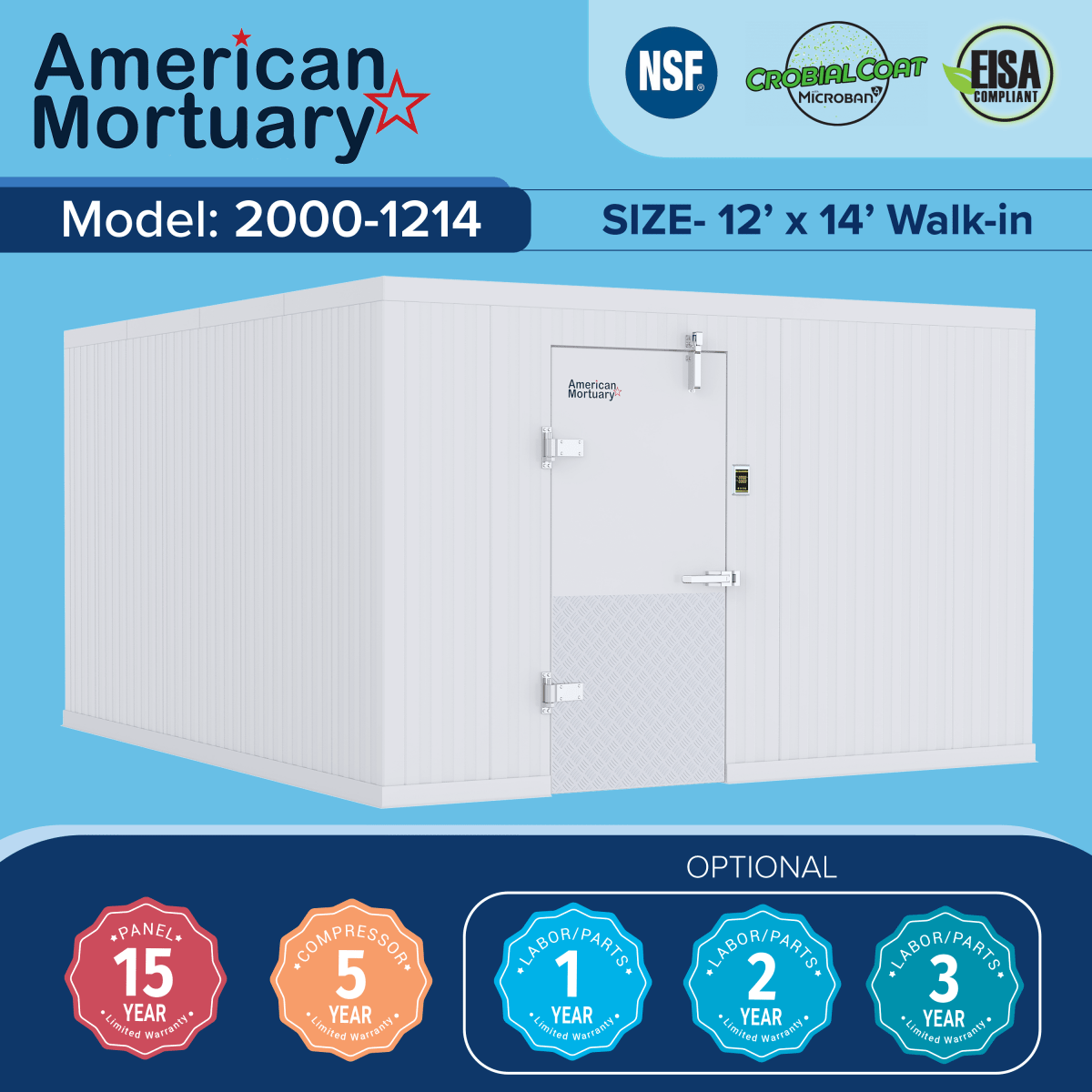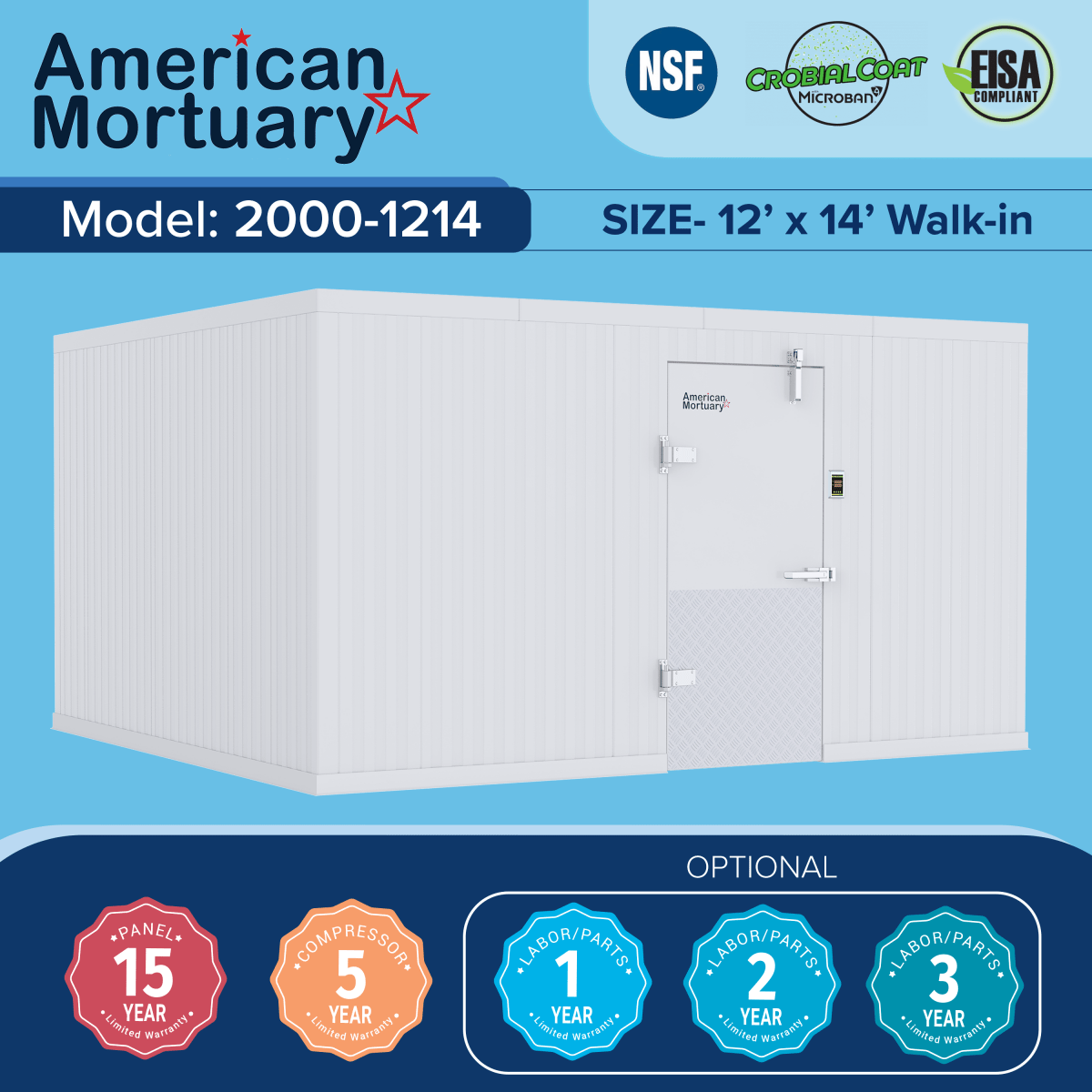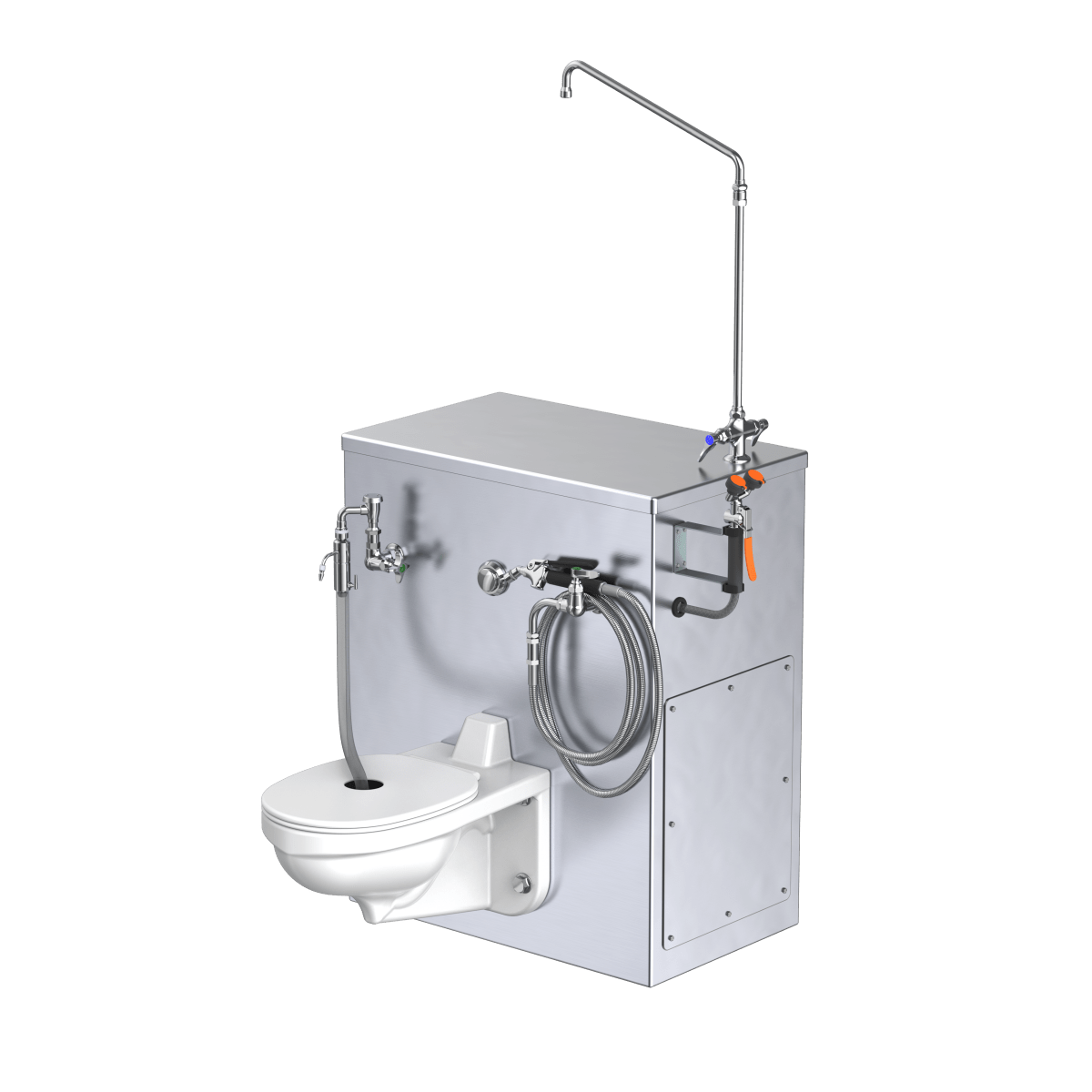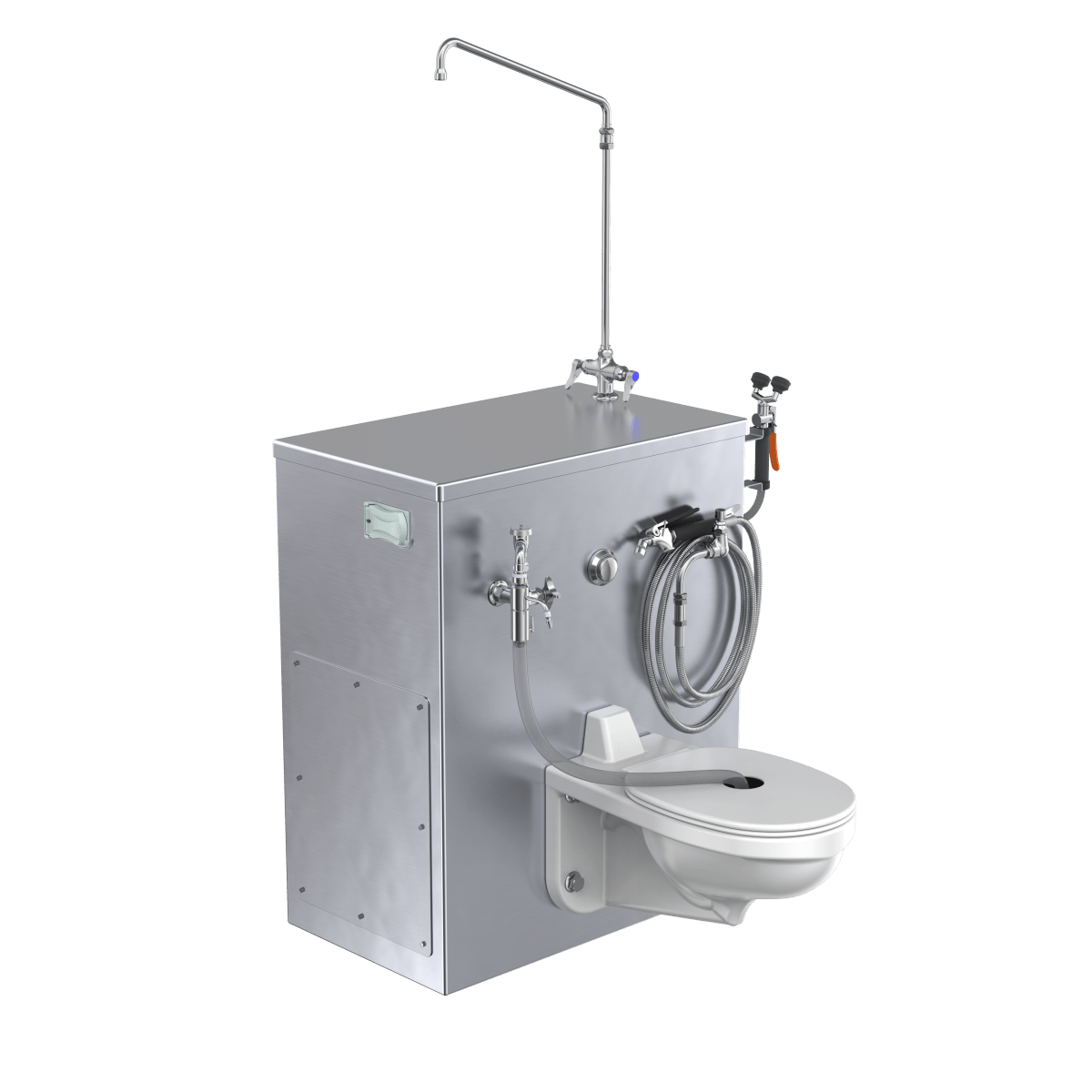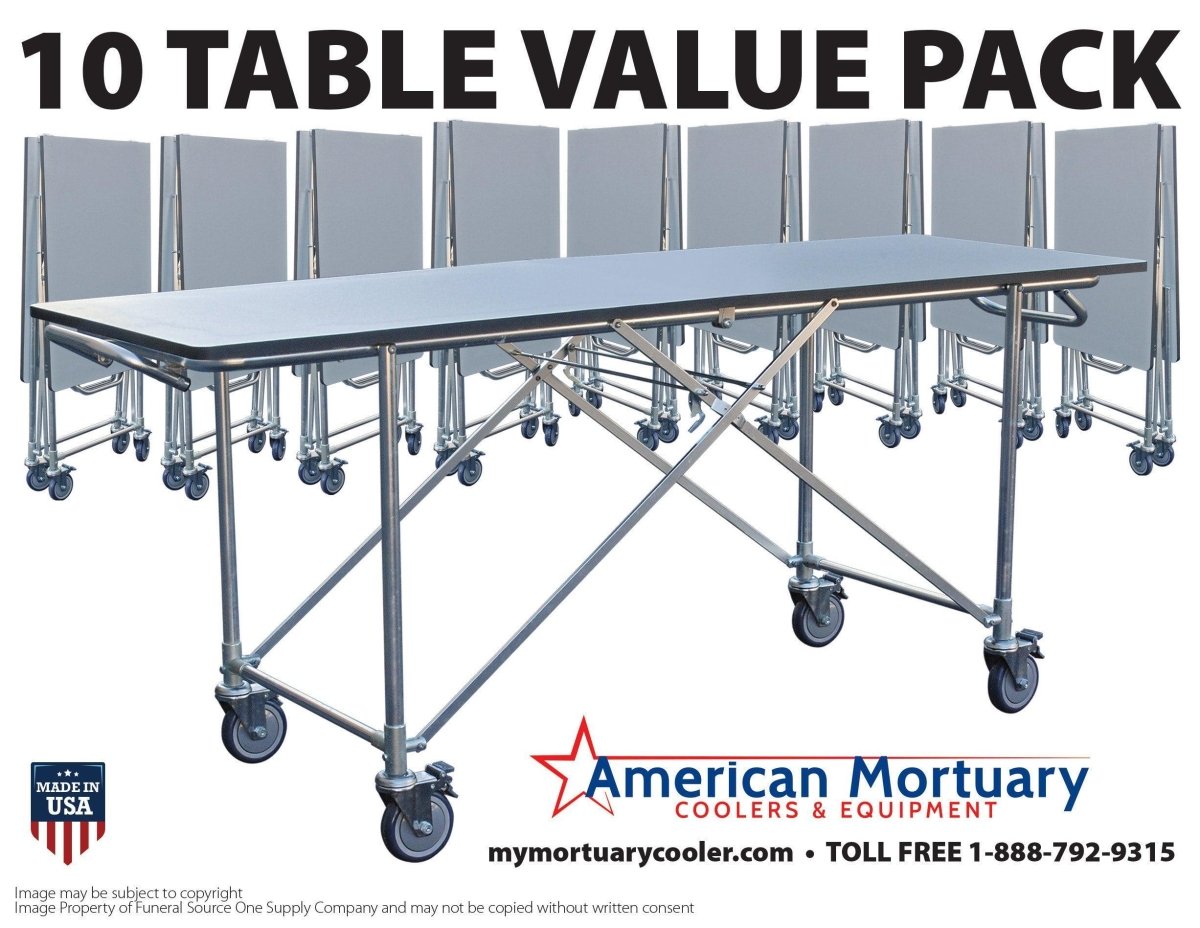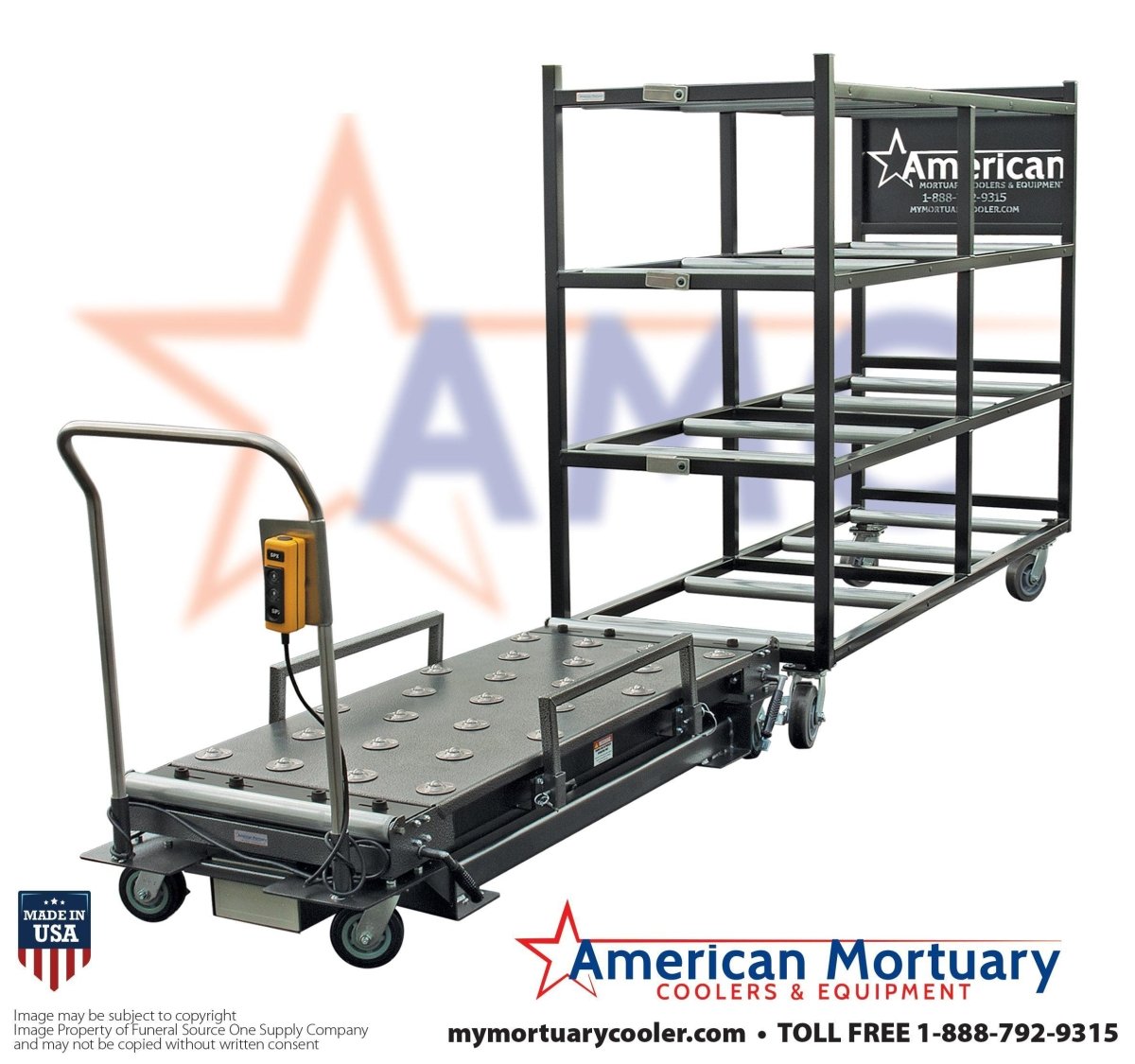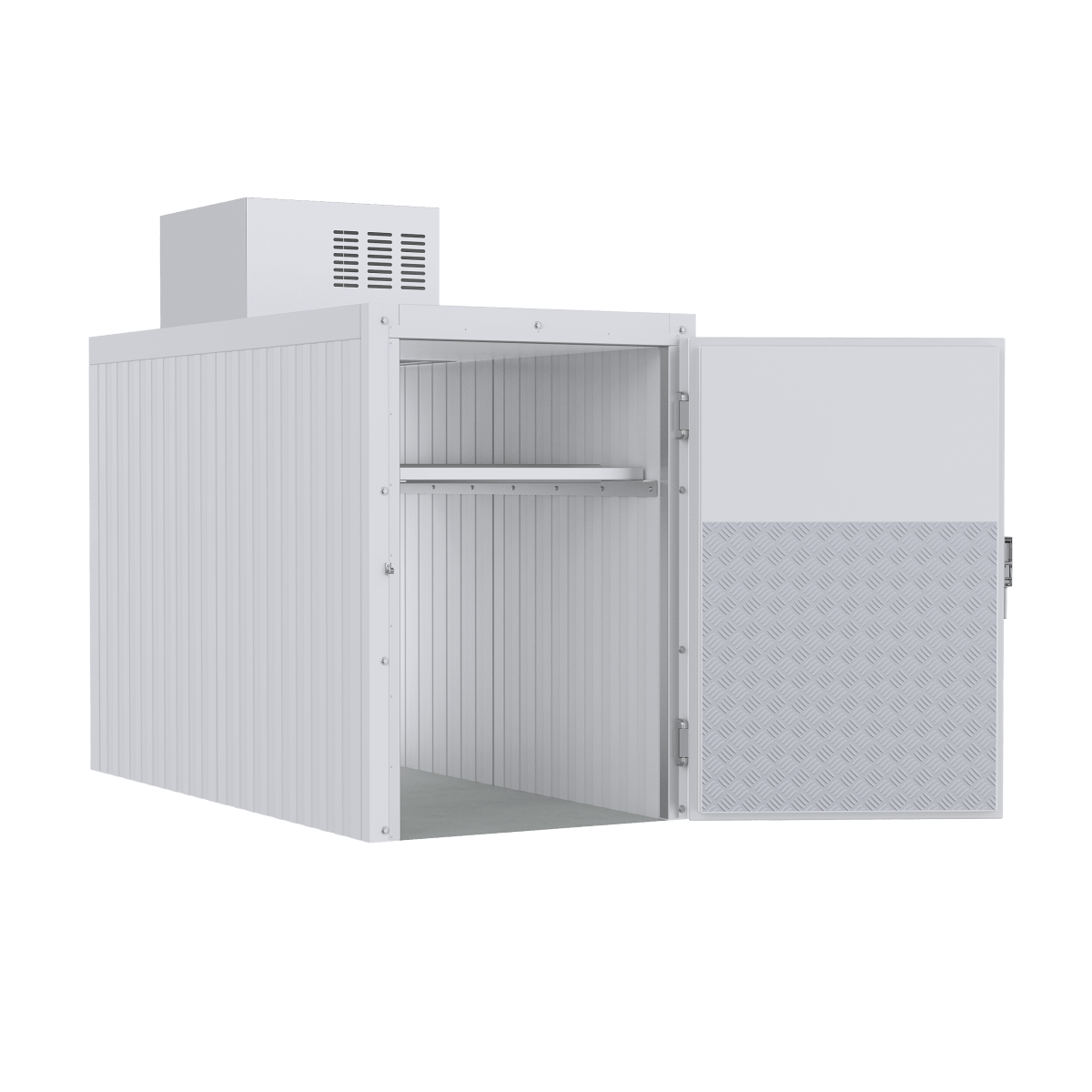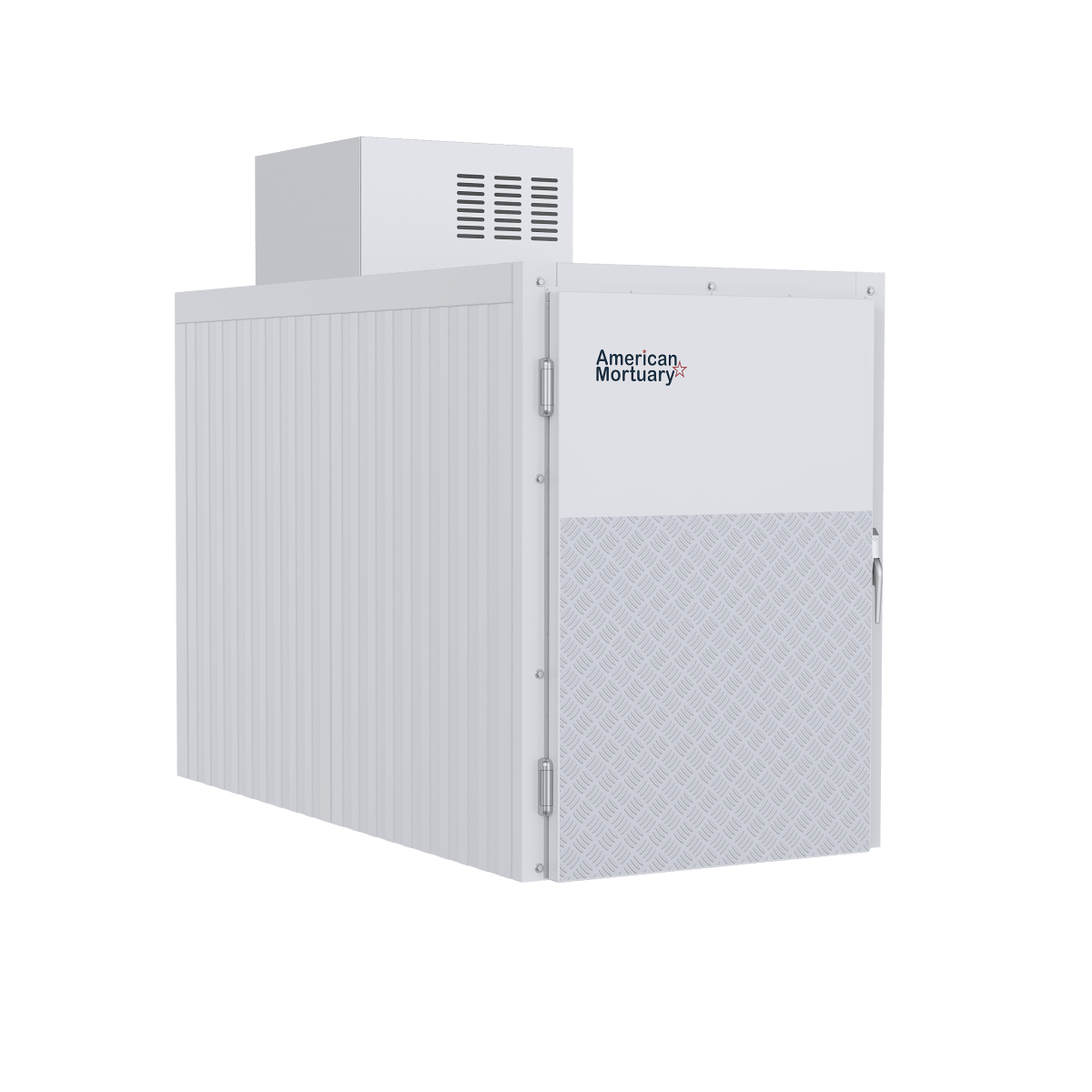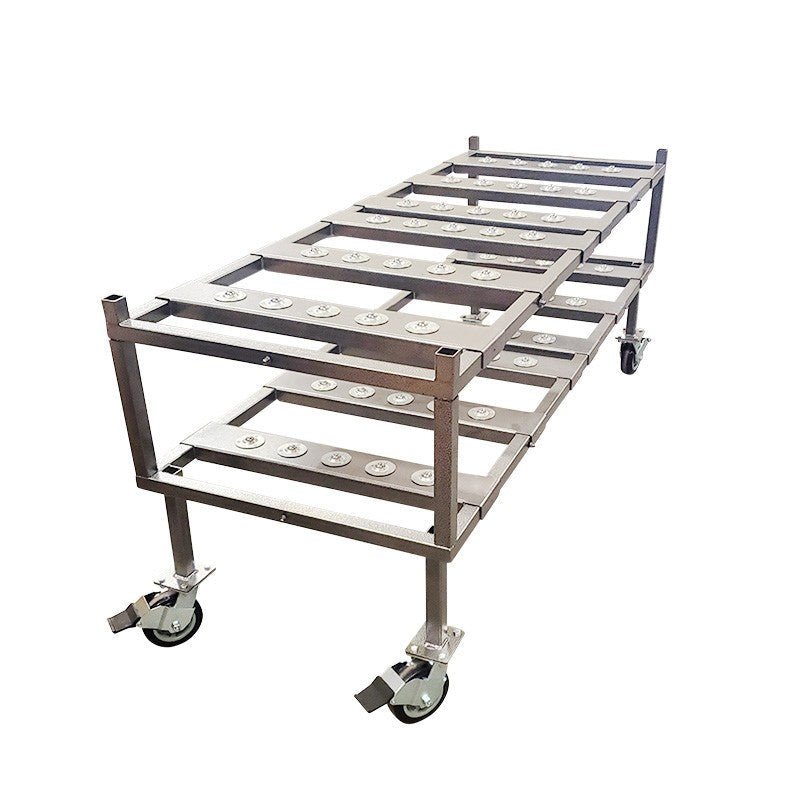Streamlining Your Funeral Home Operations
A mortuary hydraulic body lift transforms how funeral professionals care for the deceased. These remarkable devices allow your staff to move individuals between tables, caskets, and vehicles with dignity and safety—all while protecting your team from the physical strain that once defined the profession.
If you're considering adding this essential equipment to your funeral home, here's what you should know:
| Mortuary Hydraulic Body Lift Quick Facts | |
|---|---|
| Weight Capacity | 180 kg to 1,000 lbs (454 kg) |
| Operation | Manual hydraulic or electric powered |
| Staff Required | Single operator |
| Key Benefit | Reduces back injuries and labor costs |
| Price Range | $1,500 to $5,600+ |
| Warranty | Typically 1-5 years |
In today's funeral industry, the mortuary hydraulic body lift isn't just convenient—it's transformative. As Dawn from Meaningful Memories Funeral Trade recently shared with us, "LoadAlone has saved my back." Her experience mirrors countless others who've acceptd this technology.
Remember those days of calling in extra staff just to help with transfers? Or worse, the nagging worry about potential injuries during difficult lifts? Modern hydraulic systems have changed all that. With today's equipment, a single person can safely manage transfers of individuals weighing well over 600 pounds, protecting your most valuable asset—your dedicated team.
"After only a few uses, I'm completely dependent on it" – Funeral Director, Albany, NY
What makes these systems so versatile is their range of configurations. Whether your facility needs a traditional floor-based mortuary hydraulic body lift, a sophisticated ceiling-mounted track system, or a vehicle-integrated winch, there's an ergonomic solution that fits your space and budget.
I'm Mortuary Cooler, and at American Mortuary Coolers, we've supplied funeral professionals nationwide with lifting equipment designed specifically for the unique demands of your profession. Over the years, I've seen how the right lift doesn't just reduce workplace injuries—it improves the dignified handling that families expect when entrusting their loved ones to your care.

Glossary for mortuary hydraulic body lift: - funeral equipment - funeral home supply companies - oven for cremation
How Does a Mortuary Hydraulic Body Lift Work?
The mortuary hydraulic body lift operates on straightforward hydraulic principles that transform a small force into powerful, controlled lifting action. This clever technology lets a single person safely move weights that would typically require several staff members.

At the heart of these systems is a hydraulic pump creating pressure within sealed, fluid-filled cylinders. When activated, this pressure converts into smooth mechanical movement that gently raises or lowers the platform. Depending on your preference, this activation happens in one of two ways:
Manual Hydraulic Operation uses a foot pedal that you simply pump to build pressure. Each press incrementally raises the lift until you reach your desired height. Need to lower it? A release valve gradually decreases pressure for a controlled, gentle descent. Many funeral directors appreciate the tactile control this provides.
Electric Hydraulic Operation features motors that power the hydraulic pump at the touch of a button. These systems often include handy remote controls for even greater convenience when positioning. As one funeral director told me, "The remote control feature means I can stand at the optimal position to guide the deceased while operating the lift - it's a game-changer."
What makes these lifts particularly suited for funeral homes is their smooth mobility. Most models feature multiple swivel casters that allow for effortless 360-degree movement. The Sampson "One-Man" Hydraulic Body Lifter comes with nine 4-inch swivel casters specifically designed to steer standard doorways while maintaining rock-solid stability under heavy loads.
Safety isn't an afterthought - it's built into every aspect of these systems. Hydraulic safety valves prevent unexpected drops, while secure locking mechanisms hold the lift at your desired height. The typical lifting range spans from floor level to approximately 32-36 inches – perfect for aligning with embalming tables, dressing tables, caskets, and vehicle interiors.
"Before we invested in our hydraulic lift, transferring remains was always a two or three-person job," shared a funeral director from Pittsburgh. "Now, I can handle even our larger cases independently, which has completely transformed our workflow."
The mortuary hydraulic body lift truly shines in creating a single-operator workflow in what traditionally required multiple staff members. This efficiency is particularly valuable for smaller funeral homes or during those late-night calls when staffing is limited.
For specialized preparation rooms, ceiling-mounted track and gantry systems offer another dimension of hydraulic lifting. These overhead systems provide excellent support when floor space is limited or when extremely precise positioning is required.
At American Mortuary Coolers, we've seen how these systems can lift your service quality while reducing physical demands on your team. The investment in a quality hydraulic lift quickly pays for itself through improved operational efficiency and fewer workplace injuries. Plus, there's the peace of mind knowing you're providing dignified care with less physical strain.
Why Upgrade to a Mortuary Hydraulic Body Lift?
The decision to invest in a mortuary hydraulic body lift isn't just about buying new equipment—it's about changing how your funeral home operates. The benefits reach into every corner of your business, from staff wellbeing to your bottom line.
When I talk with funeral directors who've made the switch, I hear the same thing over and over: "I wish we'd done this years ago." There's good reason for this sentiment.
7 Key Benefits of Hydraulic Body Lifts
-
Dramatic Reduction in Back Injuries: Funeral service professionals face a significantly higher risk of back injuries than many other occupations. By eliminating manual lifting, a hydraulic lift keeps your team healthy and on the job.
-
OSHA Compliance: Today's workplace safety regulations increasingly focus on proper equipment for heavy lifting. Your mortuary hydraulic body lift helps ensure you're meeting or exceeding these important standards.
-
Bariatric Case Management: Let's face it—our society is changing. With rising obesity rates, funeral homes regularly handle remains exceeding traditional weight limits. Modern lifts with 1,000-pound capacities make these challenging cases manageable for just one person.
-
Labor Cost Savings: Think about how many times per week you call in extra staff just for transfers. Reducing your needs from 2-3 people to just one creates substantial savings that add up quickly. As one funeral home owner in Rochester put it with a smile, "You've thought of everything."
-
Increased Operational Speed: What used to take a team 15-20 minutes can now be completed in about 5 minutes by a single person. This efficiency ripples throughout your entire operation.
-
Improved Dignity in Handling: There's something to be said for the smooth, controlled transfers a hydraulic system provides. Gone are the awkward movements sometimes associated with manual lifting, allowing more dignified care for families' loved ones.
-
Extended Career Longevity: Many funeral directors have had to cut their careers short due to back problems. By reducing physical strain, your team members can enjoy longer, healthier careers in the profession they love.

A female funeral home owner from Binghamton recently told me with relief in her voice, "Now we will be able to handle the large cases." Her comment reflects the reality many funeral homes face—adapting to changing demographics isn't optional, it's essential.
The financial case for upgrading makes sense too. When you add up potential workers' comp claims, lost productivity from staff injuries, and the efficiency gains from single-operator transfers, most funeral homes see their investment returned within the first year.
At American Mortuary Coolers, we've seen how our hydraulic lift solutions have reduced workers' compensation claims while boosting operational efficiency. One of our Tennessee clients reported a remarkable 78% reduction in back-related complaints after introducing their new lift system.
This technology also addresses the changing face of funeral service. With more women entering the profession and an aging workforce overall, mechanical assistance for physically demanding tasks isn't just helpful—it's essential for creating an inclusive workplace where everyone can thrive.
The mortuary hydraulic body lift represents one of those rare investments that simultaneously improves staff wellbeing, operational efficiency, and the quality of care you provide to families. That's what I call a win-win-win.
Sampson "One-Man" Hydraulic Body & Casket Lifter
The Sampson "One-Man" Hydraulic Body and Casket Lifter has earned its reputation as a trusted workhorse in the mortuary hydraulic body lift world. When I visit funeral homes across the country, directors often point to this model as the game-changer that transformed their daily operations.

What makes the Sampson stand out immediately is its impressive 1,000-pound capacity, which handles even the most challenging bariatric cases with ease. The thoughtfully designed wand strap system solves one of the most awkward aspects of transfers – getting straps positioned under the deceased without disturbing them. As one of our Tennessee customers told me, "That wand system alone is worth the price of admission."
The nine 4-inch swivel casters might seem like a small detail, but they make a world of difference when navigating through older funeral homes with narrow doorways and tight corners. I've watched funeral directors glide this lift through spaces I wouldn't have thought possible, all while maintaining perfect control and stability.
The sturdy steel tubular frame with powder-coat finish not only looks professional but stands up to years of daily use. We've delivered these units to humid Florida funeral homes and dry Arizona facilities, and they perform beautifully in all environments.
Here's how the Sampson compares to another popular model:
| Feature | Sampson "One-Man" | Ultimate 1000 |
|---|---|---|
| Weight Capacity | 1,000 lbs | 1,000 lbs |
| Caster Configuration | Nine 4" swivel | Six 3" swivel |
| Strap System | Wand-guided insertion | Standard straps |
| Power Source | Manual hydraulic | Manual hydraulic |
| Warranty | 1 year | 5 years |
| Price Range | $1,484.95 | Approx. $1,650.00 |
Why This Mortuary Hydraulic Body Lift Stands Out
The beauty of the Sampson lift is how it transforms what used to be a three-person job into a task one person can handle confidently. A funeral director in Mississippi told me, "I used to dread those middle-of-the-night calls when I knew I'd be short-staffed. Now I can handle everything myself without breaking a sweat."
The single-operator functionality isn't just marketing – it's genuinely designed for one person to manage the entire transfer process. From embalming table to dressing table to casket, the adjustable body carriage accommodates different body shapes while maintaining dignity throughout.
Its bariatric-ready design has become increasingly important as funeral homes serve a changing population. The 1,000-pound capacity ensures you never have to turn away a family or scramble for extra help when faced with a larger individual.
The one-year warranty provides peace of mind, though I've seen these units still going strong years later with proper maintenance. The manual hydraulic foot pump is intentionally simple – fewer electronic components mean fewer things that can fail when you need the lift most.
At American Mortuary Coolers, we've delivered the Sampson lift to funeral homes across all 48 contiguous states, and the feedback is consistently positive. Directors appreciate that the learning curve is minimal – most staff are comfortable with it after just a few uses.
As one funeral director put it: "Moving bodies used to be the part of the job that made me think about early retirement. Now it's just another task I can handle without calling for backup."
Ultimate 1000 Casket & Body Lift
The Ultimate 1000 Casket & Body Lift stands as the crown jewel in Mortuary Lift Company's lineup – a company that's been perfecting these systems for over five decades. This mortuary hydraulic body lift has truly earned its "Ultimate" name through years of refinement and real-world testing in funeral homes across America.

When they call it an "All-in-One Lifting™" system, they're not exaggerating. Many of our clients tell us it's the only lift they've needed to purchase for their entire operation. One funeral director in Memphis joked, "This thing will probably outlast me!" – and he might be right.
What makes the Ultimate 1000 special isn't just its impressive 1,000-pound capacity (though that certainly helps with today's increasingly common bariatric cases). It's the thoughtful engineering behind every aspect of the design. The heavy-duty steel frame was built specifically with funeral and hospital environments in mind, where reliability isn't just convenient – it's essential.
The manual hydraulic system delivers smooth, controlled lifting that protects both your staff and the dignity of the deceased. There's something reassuring about the steady, deliberate movement as it raises – no jerky motions or concerning sounds that might make families uncomfortable if they happen to be nearby.
Perhaps the most forward-thinking aspect of the Ultimate 1000 is its track compatibility. This lift is designed to work seamlessly with ceiling-mounted track and gantry systems, allowing you to create a comprehensive lifting solution custom to your specific facility. For older buildings with challenging layouts or tight spaces, this integration capability is a game-changer.
The company's 50+ years of experience shows in the details. They've had half a century to listen to funeral directors' feedback and continuously refine their design. That confidence is reflected in their industry-leading 5-year warranty – substantially longer than most competitors offer.
"This heavy-duty lift is the only All-in-One Lifting™ system you will ever need for your business," states Mortuary Lift Company. Based on what we've seen at American Mortuary Coolers, they're right. We've installed these in funeral homes from Florida to Washington state, and the feedback is consistently positive.
The longevity is particularly impressive. Many of our clients report using their Ultimate 1000 lifts for 15-20 years with just basic maintenance. When you amortize the initial investment over that timespan, it becomes one of the most cost-effective purchases a funeral home can make.
For larger operations with multiple floors, the Ultimate 1000 pairs perfectly with the company's Stepper™ Electric Stair Climbing System (375 lb capacity). Together, they create a comprehensive solution for both horizontal and vertical transport challenges.
We've helped numerous funeral homes design complete systems around the Ultimate 1000 as the foundation. Whether you're building a new facility or upgrading an existing one, this lift's versatility makes it an excellent centerpiece for your preparation room workflow. And when you're making an investment expected to serve your business for decades, that kind of adaptability really matters.
HD 1000 MAX Powered Scissor Lift System
The HD 1000 MAX Powered Scissor Lift System truly represents the premium end of mortuary hydraulic body lift technology. It's where innovation meets practicality in the funeral preparation room, combining electric-powered convenience with exceptional versatility through its clever scissor mechanism and multi-directional top.

Unlike traditional lifts with their fixed platforms, the HD 1000 MAX uses a scissor mechanism that offers some real advantages in your prep room. When lowered, it maintains a compact footprint that doesn't dominate your space. Yet when raised, it extends to impressive heights with smooth, controlled movement.
"The first time I used our new scissor lift, I wondered how we managed without it for so long," shared a funeral director from Memphis. "It's like night and day compared to our old manual system."
This lift comes packed with practical features designed by people who clearly understand the daily challenges funeral professionals face. The weight capacity matches industry leaders at a robust 1,000 pounds, accommodating even the most challenging bariatric cases with dignity and ease.
What really makes funeral directors smile about the HD 1000 MAX is its multi-directional ball top. This ingenious surface allows remains to be moved in any direction without awkwardly repositioning the entire lift. In smaller preparation rooms where every inch counts, this 360-degree transfer capability is nothing short of revolutionary.
The powered operation eliminates the physical strain of pumping manual hydraulic pedals. At the touch of a button, you can raise or lower the platform with precise control, maintaining smooth, dignified transfers regardless of weight. For staff members with any physical limitations or at the end of a long day, this electric operation is a welcome relief.
For our crematory clients, we also offer a specialized version. The Heavy-Duty Manual Hydraulic Crematory Scissor Lift provides similar functionality with a manual hydraulic system, specifically designed for the unique requirements of cremation facilities.
At American Mortuary Coolers, we've seen how the HD 1000 MAX transforms workflow efficiency. In our blog post about efficient mortuary cadaver lifts, we noted how "the multi-directional ball top design revolutionizes how remains can be transferred, allowing for smooth movement in any direction without repositioning the lift itself."
Yes, the investment in a powered scissor lift system (starting around $5,602) represents a step up from basic hydraulic models. But our customers consistently report that the return on investment comes quickly through increased efficiency, reduced physical strain, and improved versatility. For high-volume facilities handling frequent bariatric cases, these additional features more than justify the premium price.
The real-world feedback we receive from funeral homes using the HD 1000 MAX highlights how the multi-directional top saves precious minutes during transfers – particularly valuable when preparing multiple cases on tight schedules. The electric operation also eliminates the physical fatigue associated with repeatedly pumping manual systems throughout a busy day.
With its height range spanning from approximately 8 inches when fully lowered to 36 inches at maximum extension, this lift aligns perfectly with standard preparation tables, dressing tables, and caskets. The standard 110V electrical connection means no special wiring is required – simply plug it in and you're ready to work smarter, not harder.
PLS BodyHoist Hydraulic Ceiling Lift
The PLS BodyHoist offers a refreshingly different approach to the mortuary hydraulic body lift category by taking the lifting mechanism off the floor and into the air. This ceiling-mounted track system brings a touch of healthcare innovation to the funeral industry, creating more space in your prep room while enhancing the dignity of transfers.

Developed by Patient Lifting Solutions (PLS), the BodyHoist wasn't originally designed for funeral homes, which is exactly what makes it special. By adapting medical-grade lifting technology for mortuary use, PLS has created a system that puts respectful handling at the forefront while meeting rigorous safety standards.
"When I first saw the BodyHoist in action, I was struck by how gentle the transfer process looked," shares one of our customers from a historic funeral home in Boston. "There's something dignified about the way it cradles the deceased."
Key Specifications:
| Feature | Specification |
|---|---|
| Safe Working Load | 275 kg (606 lbs) |
| Certification | ISO 13485:2016, NEN-EN-ISO 10535:2007 |
| Adjustability | Shoulder width (600 mm) and ankle width (350 mm) |
| Special Feature | Adjustable balance point for optimal weight distribution |
| Installation | Ceiling-mounted track system |
| Operation | Single-person operation |
| Core Value | Respectful handling of the deceased |
The beauty of a ceiling-mounted system is that it completely frees up your floor space. For smaller funeral homes where every square foot counts, this design advantage can transform a cramped prep room into a more functional workspace. The overhead track also gives you flexibility to position remains precisely where you need them, without navigating around other equipment.
What truly sets the BodyHoist apart is its thoughtful approach to handling. Unlike some systems that can feel mechanical, this lift features adjustable shoulder and ankle supports that conform to different body types. The adjustable balance point is particularly clever – it lets you find the exact center of gravity for each individual, maintaining a natural, respectful posture throughout the transfer.
As PLS states with neat simplicity: "When using the BodyHoist you treat a deceased with respect." This isn't just marketing talk – it's built into the design that minimizes unnecessary movement or manipulation during transfers.
Using the BodyHoist follows a straightforward process that any staff member can master quickly. Position the lift around the deceased and let the forks close automatically. Support the head with the included headband and adjust the balance point. Then simply lift, move to your destination, lower carefully, and release using the red handle. The entire process feels smooth and controlled, even when handled by a single operator.
While the 275 kg capacity is somewhat lower than some floor-based models offering 1,000-pound limits, it remains more than adequate for the vast majority of cases most funeral homes encounter. The trade-off brings ISO certification that reflects its healthcare-grade engineering and quality.
For funeral homes considering renovations or planning new facilities, the ceiling-mounted PLS BodyHoist offers an opportunity to design your workflow from scratch. We've helped several funeral homes in historic buildings throughout the Northeast and Midwest implement these systems, particularly where generous ceiling heights offset limited floor space.
"It completely changed how we think about our prep room layout," noted one funeral director from Michigan. "Now we design around the track system rather than trying to steer around floor-based equipment."
At American Mortuary Coolers, we've found these ceiling systems particularly valuable for facilities looking to create a more streamlined, modern approach to body handling while honoring traditional values of respect and dignity.
LoadAlone Vehicle Hydraulic Winch System
The LoadAlone stands out in the mortuary hydraulic body lift family as a game-changer specifically designed for vehicle operations. This clever system transforms ordinary vans, SUVs, and trucks into efficient one-person removal vehicles – no assistant required!

I've personally seen the relief on funeral directors' faces when they find this solution. Gone are the days of waiting for a second person to arrive for removals or straining your back trying to manage alone.
Key Specifications and Features:
| Feature | Specification |
|---|---|
| Weight Capacity | 600+ pounds |
| Vehicle Compatibility | Vans, SUVs, trucks, compact SUVs |
| Operation | Remote-controlled electric winch |
| Special Feature | Synthetic cable with stretcher attachments |
| Tax Benefit | Eligible for 50% tax credit as accessibility device |
| Warranty | 1-year warranty with 30-day money-back guarantee |
| Concept | "Zero-lift funeral home" approach |
The heart of the LoadAlone is its powerful electric winch with handy remote control operation. Simply attach the synthetic cable to your standard mortuary stretcher using the included stopper pins and cot cups, press a button, and watch as the system does all the heavy lifting for you. It's like having an extra staff member without the payroll!
What our customers love most about the LoadAlone is its flexibility. As creator David P. Murphy likes to say, it's "Made for Vans, SUV's, Trucks and Compact SUV's" – meaning you can use your existing vehicles rather than investing in specialized removal vans. We even have attachments available for hearses and removal beds.
The story behind LoadAlone is just as compelling as the product itself. Murphy developed it after witnessing the physical toll that removals take on funeral professionals. His motto – "LoadAlone we got your back!" – isn't just clever marketing; it reflects a genuine commitment to protecting funeral directors from the back injuries that have plagued our industry for generations.
The feedback we receive from funeral homes using the system speaks volumes:
"LoadAlone has saved my back," shares Dawn from Meaningful Memories Funeral Trade. Another director from Albany confessed, "After only a few uses, I'm completely dependent on it." Perhaps most telling was the female funeral home owner from Binghamton who told us, "Now we will be able to handle the large cases."
Beyond the obvious operational benefits, the LoadAlone offers a surprising financial advantage. The system qualifies for a 50% tax credit as an accessibility barrier removal device under relevant tax codes. When you combine this with the ongoing labor savings from single-person removals, the system essentially pays for itself.
The concept of a "zero-lift funeral home" represents a fundamental shift in how we approach body handling in funeral service. By eliminating manual lifting throughout the removal process, LoadAlone addresses one of the most physically demanding and injury-prone aspects of our profession.
For smaller funeral homes or those serving rural areas where staffing is tight, the LoadAlone system is nothing short of transformative. The ability to conduct removals with just one person provides scheduling flexibility and reduces the burden of on-call rotations.
At American Mortuary Coolers, we've supplied LoadAlone systems to funeral homes across our service regions, with particularly enthusiastic adoption in rural areas of the Southeast and Midwest. The smile of relief when funeral directors realize they'll never have to manually load a removal vehicle again? That's a moment we never get tired of seeing.
Buying Guide: Choosing the Right Mortuary Hydraulic Body Lift
Selecting the perfect mortuary hydraulic body lift for your funeral home isn't just about buying equipment—it's about investing in your staff's wellbeing and the dignity of your services. After helping hundreds of funeral homes find their ideal lifting solution, I've learned that the right choice can transform your daily operations.

When I visit funeral homes across the country, directors often tell me they wish they'd upgraded sooner. As one director in Memphis put it, "We suffered through unnecessary backaches for years before realizing how affordable these lifts actually are."
Let's walk through what really matters when making this important decision.
Weight capacity should top your consideration list. Standard models typically handle 180-250 kg (396-551 lbs), while heavy-duty options support up to 454 kg (1,000 lbs). Don't just think about your average cases—consider those occasional bariatric cases that can catch you unprepared. The trend is definitely moving toward higher-capacity models as our population changes.
The lifting height range determines which transfers your equipment can handle. For table-to-table movements, you'll need heights matching your preparation tables (usually 30-36 inches). If you're lifting from the floor, you'll need a full range from ground level up. The most versatile lifts adjust from floor level to about 36 inches, covering most scenarios you'll encounter.
Choosing between manual and electric operation significantly impacts both price and daily use. Manual hydraulic systems with foot pumps cost less ($1,500-$3,000) and never need charging, but require physical effort. Electric systems ($3,500-$5,600+) cost more but offer push-button convenience that staff members consistently prefer after trying both options.
Your facility's layout will determine what footprint and maneuverability requirements matter most. I've seen beautiful lifts purchased that couldn't fit through narrow hallways or steer tight corners in older funeral homes. Measure your doorways and consider your turning spaces before purchasing. More casters (7-9) generally create smoother movement and better weight distribution—a feature your staff will appreciate during long transfers.
Some funeral homes have special circumstances that require unique solutions. If you operate across multiple floors, you might need stair-climbing capabilities like the Stepper™ (375 lb capacity). Limited floor space? Consider ceiling-mounted systems like the BodyHoist. For those handling frequent removals, vehicle-integrated systems like LoadAlone can be game-changers.
Don't overlook accessories and compatibility with your existing equipment. Does the lift work with your current stretchers? Are replacement straps readily available? If you're considering ceiling mounts, is your building structurally suitable? These practical questions prevent frustrating findies after purchase.
Warranty and support matter tremendously for equipment you'll rely on daily. Coverage ranges from 1 year (Sampson) to 5 years (Ultimate 1000). Beyond the warranty period, consider parts availability and service options. A lift that requires shipping for repairs can leave you without critical equipment for weeks.
While budget considerations inevitably influence decisions, think about total ownership cost rather than just purchase price. Entry-level manual hydraulic lifts ($1,500-$2,500) might need replacement sooner, while premium systems ($4,000-$5,600+) often last decades with proper maintenance. Many funeral directors tell me their only regret was not investing in a higher-quality model from the start.
For a step-by-step evaluation approach, we've developed an Ultimate Checklist for Comparing Mortuary Lifts that walks you through each consideration methodically.
Key Specs to Compare in a Mortuary Hydraulic Body Lift
When examining specific models, four technical aspects deserve special attention:
The strap system design dramatically affects how easily you can secure remains. Wand-guided systems like the Sampson allow placement without lifting or rolling the body—a feature that preserves dignity and reduces strain. Look for adjustable width systems and quick-release mechanisms that balance security with efficiency. As one funeral director told me, "The strap system makes or breaks your experience with the lift."
Those small wheels make a big difference! Caster size and quality impact daily usability more than you might expect. Larger casters (4+ inches) handle thresholds and carpet transitions more smoothly. Locking mechanisms prevent unwanted movement during critical transfers. Quality casters with sealed bearings offer longer life and smoother operation—worth paying a bit more for.
For electric models, battery life can make or break your workday. Ask pointed questions: How many lifts per charge? How quickly does it recharge? What does replacement cost? Some models offer backup manual operation when batteries deplete—a valuable feature when you're working back-to-back services.
Finally, understand the maintenance intervals and requirements before purchasing. Some systems need regular hydraulic fluid checks and specific lubrication points. Low-maintenance models might cost more initially but save significant time and expense over their lifespan. One funeral director in Nashville shared that his 15-year-old lift still operates perfectly because he followed the simple quarterly maintenance schedule.
At American Mortuary Coolers, we don't just sell equipment—we help you find solutions that work for your specific situation. I always recommend requesting an in-person demonstration whenever possible. Our team across our regional locations can arrange demonstrations of various lift models so you can experience the differences hands-on before making this important investment.
The right mortuary hydraulic body lift isn't just equipment—it's peace of mind for you and your staff for years to come.
Frequently Asked Questions about Mortuary Hydraulic Body Lifts
What weight capacities are available?
When shopping for a mortuary hydraulic body lift, one of the first questions funeral directors ask us is about weight capacity. The good news is today's lifts come in a range of options to handle virtually any situation you might encounter.
Standard models typically support between 180 kg to 250 kg (about 396 lbs to 551 lbs), which handles most traditional cases with ease. For facilities regularly managing larger individuals, our heavy-duty models confidently support up to 454 kg (1,000 lbs). Some specialized bariatric models push these limits even further.
I've noticed a clear industry shift toward higher-capacity models over the past decade. This isn't surprising given demographic changes - the average weight of deceased individuals has steadily increased, and funeral homes need equipment that can adapt.
One funeral director from our Chicago service area shared: "We purchased our 1,000 lb capacity lift five years ago thinking it was overkill, but we've already had three cases that approached 600 lbs. That extra capacity provides peace of mind."
When helping funeral homes select the right capacity, I always recommend choosing a lift rated at least 20% above your anticipated maximum need. Remember to account for the combined weight of both the deceased and any caskets or containers being lifted simultaneously. This buffer ensures safe operation and protects your investment for years to come.
How do these lifts improve staff safety and efficiency?
The benefits of a mortuary hydraulic body lift go far beyond simply moving heavier cases. They fundamentally transform how your team works together.
First and foremost is injury prevention. Back injuries have traditionally plagued our profession, sometimes ending careers prematurely. By eliminating manual lifting, these devices dramatically reduce this risk. One study we followed showed funeral homes using hydraulic lifts reduced lifting injuries and related expenses by up to 78% - a number that speaks volumes.
"After only a few uses, I'm completely dependent on it," a funeral director from Albany told me recently. This sentiment reflects what we hear constantly - once you experience the difference, there's no going back.
The staffing flexibility alone justifies the investment for many smaller operations. Transfers that once required calling in additional help can now be handled by a single person, even during night calls or weekend emergencies when staffing is tight.
I've also noticed these lifts create a more consistent process. The standardized, repeatable transfer procedure works the same way regardless of who's operating the equipment or the size of the deceased. This consistency improves workflow and significantly reduces accidents.
Perhaps most importantly, these lifts extend careers. I've known too many funeral professionals forced into early retirement due to chronic back issues. Modern lifting technology allows dedicated professionals to continue serving families well into their later years, preserving valuable experience and institutional knowledge.
What routine maintenance does a mortuary hydraulic body lift require?
Taking proper care of your mortuary hydraulic body lift isn't complicated, but it is essential for safety and longevity. Think of it like maintaining your car - a little regular attention prevents bigger problems down the road.
For manual hydraulic systems, we recommend monthly checks of hydraulic fluid levels - this takes just minutes but catches issues early. Every three months, take a moment to lubricate moving parts with food-grade lubricant (this prevents contamination issues). Once a year, have a professional inspect the hydraulic seals and pressure systems. And of course, address any fluid leaks immediately - they never fix themselves!
Electric systems need slightly different attention. Keep batteries charged according to the manufacturer's schedule, check electrical connections monthly, and have the motor professionally inspected annually. These systems have more components but often offer diagnostic features that simplify troubleshooting.
All lifts, regardless of type, benefit from regular cleaning with appropriate disinfectants (always following manufacturer guidelines). Inspect straps and securing mechanisms before each use - these are literal lifelines and deserve careful attention. Monthly, check caster function and clean debris from wheels, which prevents those annoying squeaks and improves maneuverability.
For ceiling-mounted systems like the BodyHoist, don't forget to regularly inspect track mountings and trolley components. Overhead safety is paramount, and these specialized systems often have manufacturer-specific protocols that should be followed to the letter.
At American Mortuary Coolers, we've found that funeral homes who maintain a simple maintenance log tend to get significantly longer service from their equipment. Many of our clients across the Southeast and Southwest have implemented quarterly maintenance programs that have extended their lift lifespans well beyond the warranty period. The annual professional inspection ($150-$300) is money well spent when it prevents a critical failure during an important service.
Conclusion
The mortuary hydraulic body lift has transformed from a luxury item to an essential tool in today's funeral service industry. Throughout this guide, we've seen how these specialized lifting systems offer game-changing benefits for funeral homes of every size – they reduce workplace injuries, enable single-person transfers (even for challenging cases), and bring dignity to every aspect of care.
What I love about the current market is that there's truly a hydraulic lifting solution for every facility and budget. Whether you're looking at traditional floor-based options like the Sampson "One-Man" and Ultimate 1000 for versatile prep room use, or specialized equipment like the HD 1000 MAX scissor lift for specific workflow needs, you'll find something that fits your operation perfectly.
For facilities with limited floor space, ceiling-mounted systems like the BodyHoist provide an neat solution while ensuring dignified handling. And for those looking to transform their removal operations, vehicle-integrated solutions like the LoadAlone make a world of difference in daily operations.
At American Mortuary Coolers, we've had the privilege of seeing these systems improve operations for our clients across all regions we serve. From our home base in Tennessee to our service areas spanning the Northeast, Southeast, Southwest and beyond, funeral professionals consistently tell us that their hydraulic lifting technology ranks among their most valuable equipment investments.
Beyond our extensive selection of mortuary hydraulic body lifts, we also specialize in custom mortuary coolers custom to your specific facility needs. Our direct delivery service across the contiguous 48 states ensures that funeral homes nationwide can access the latest in mortuary technology without hassle or delay.
As our industry continues to evolve – with changing demographics and increasing emphasis on staff safety – hydraulic lifting systems will only grow in importance. Investing in quality lifting equipment protects your most valuable asset (your staff) while improving the dignity with which you serve families during their most vulnerable moments.
We'd love to discuss your specific lifting needs and explore how our custom solutions can lift your funeral service operations. Whether you're handling routine cases or specialized situations, there's a hydraulic lifting system that can transform your workflow while protecting your team and honoring the deceased with the dignity they deserve.


